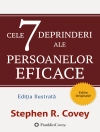Violent No More is for men who have struggled with or are currently being violent in an intimate relationship. Filled with real stories of men who have harmed the ones they love and found the courage to change, this highly acclaimed book has helped thousands acknowledge and reform their abusive behavior. Author Michael Paymar doesn’t sidestep the unpleasant reality of domestic violence—included here are the sometimes shocking first-person accounts of violent men, along with those of battered women. More importantly, many of these stories illustrate the ways in which men were able to stop their use of violence and control. This edition contains four new chapters which address the challenges faced by practitioners who work with domestic violence offenders or victims, and the particular struggles faced by combat veterans returning from war, many of whom come home with PTSD and other mental health issues. With group exercises and individual goal-setting plans to help men find healthy ways of responding to conflict, change the cultural conditioning that condones violence, and avoid reverting to old patterns,
Violent No More is an essential guide for men dealing with violence issues, as well as for the professionals who assist in their efforts to improve.
Tabla de materias
Foreword
Preface
Acknowledgments
Introduction
Why Write a Book for Men Who Batter?
A Note to the Reader
Chapter 1: A Challenge for Men
Andy’s Story
Andy’s Story Five Years Later
The First Step: Owning the Problem
The Next Step: Getting Help
How to Use This Book
Chapter 2: The Roots of Men’s Violence against Women
The Superman Myth
How Our Culture Encourages Violence
The Struggle for Equality
What Men Expect from Relationships
Chapter 3: The Origins of Abuse and Sexual Violence
Cassie’s Story
Bernice’s Story
Women and Violence
The Violence We Learn at Home
The Violence We Learn from Society
Why We Use Violence
Sexual Violence
The Impact of Violence on Sexual Relationships
Chapter 4: It’s More Than Just Physical Violence
Jim’s Story
Using Intimidation to Control
Using Threats
Blocking Her Freedom to Decide
Using the Children to Get to Her
The Pain of Emotional Abuse
Understanding and Stopping Battering
Chapter 5: Getting Past Denial
Sid’s Story
Taking Responsibility
Minimizing Violence
Self-Defense or Retaliation?
Guidelines for Remaining Nonviolent
Letting Go of Blame
Alcohol, Drugs, and Violence
Anger
Chapter 6: Making Changes and Staying on Track
Mark’s Story
Letting Go
Taking Time-Outs
Time-Out Rules
Self-Talk: Learning to Think Positively
Handling Jealousy
The Danger of Obsession
Chapter 7: Staying Together
What Traps a Woman in an Abusive Relationship?
The Switzers’ Story
It May Always Be a Struggle
Understanding and Accepting Women’s Anger
Changing the Mind-Set
Getting Your Needs Met without Being Abusive
Chapter 8: Resolving Conflicts, Strengthening Relationships
Elliot’s Story
New Relationships, Old Problems
Egalitarian Relationships
Sharing the Load
The Issue of Money
Expressing Feelings
Learning to Negotiate and Compromise
Negotiation Guide
Fair Discussion Guide
Developing a Personal Responsibility Program
Chapter 9: Healing
Dave’s Story
Dave’s Story Five Years Later
Support for Changing Men
New Definitions of Masculinity
Health and Balance 1
Dating: How Much of the Past Do We Reveal?
Talking to Your Children about Your Violence
Staying on Course: Your Lifelong Commitment
Chapter 10: Veterans Coming Home
Hector’s Story
Screening for Mental Health Problems
Veteran’s Courts
Changing Military Culture
Chapter 11: Creating Change in Groups
Ron’s Story
Expectations of Counseling
The Theory and Practice of Offender Programs
The Duluth Curriculum: New Approaches
How Well Does Counseling Work?
The Principles of an Offender Program
Intake, Orientation and Screening
Partner Orientation and Safety Procedures
Controversies in the Field
Research: What Do We Know?
Women that Use Violence in Relationships
Chapter 12: Danger and Lethality
Dale’s Story from Prison
Assessment Tools
Chapter 13: Primary Prevention: The New Frontier
Stopping Rape on College Campuses
Reducing Demand for Violent Pornography
Trafficking: Choices for Men
Backlash: The War on Women
Social Change
Sobre el autor
Michael Paymar
Michael Paymar has lectured and trained, both nationally and internationally, on human rights and ending gender-based violence. He provides training and technical assistance to professionals in the criminal and civil justice system, law enforcement, and the military on how to end domestic violence. Paymar lives in Minneapolis, MN, where he serves in the U.S. House of Representatives.
Anne Ganley lives in Seattle, WA.












